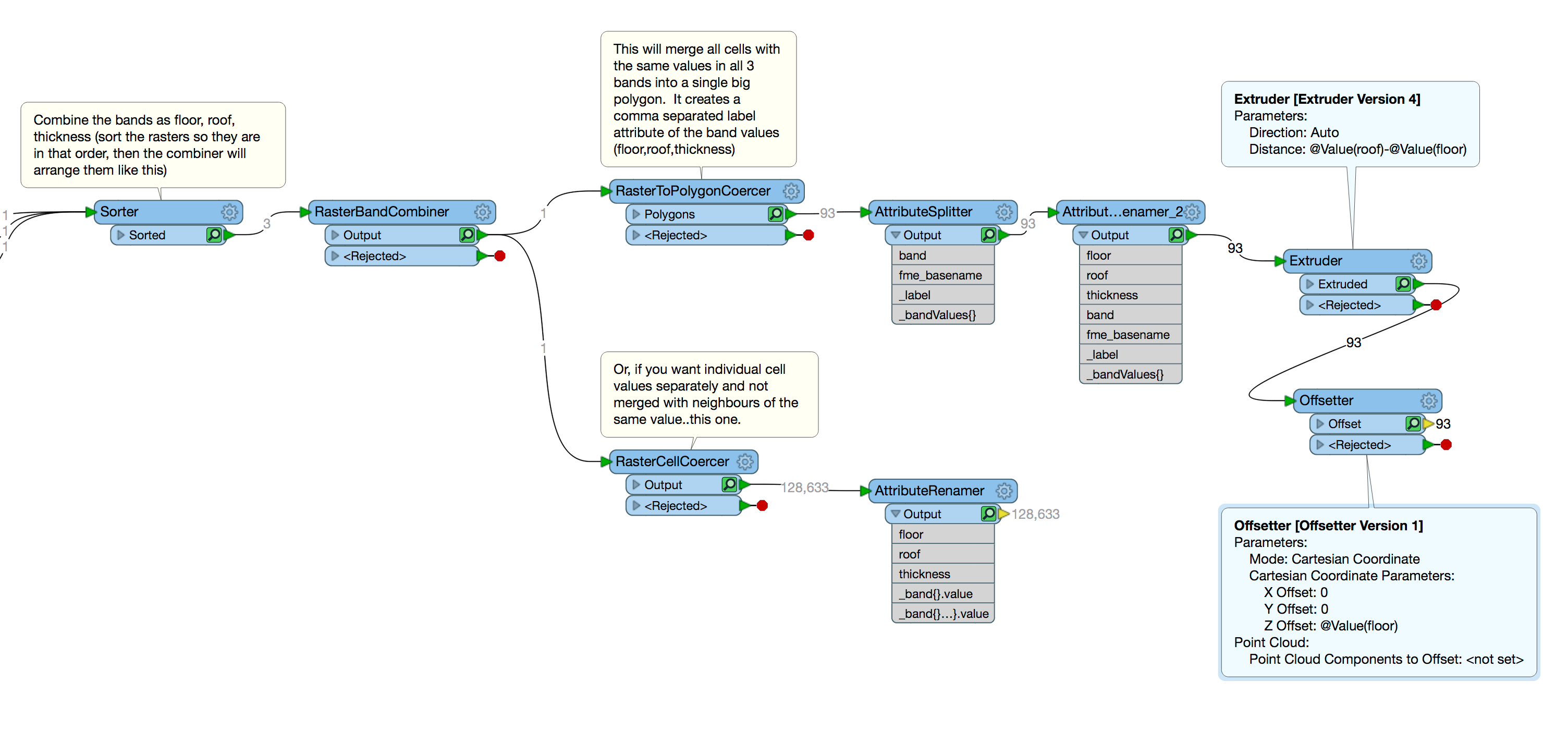So this was too intriguing not to give a crack at. So I talked to the team and we came up with the following.
The main trick is to use the RasterBandCombiner to get all 3 of your rasters into 1 raster that has 3 bands. Important to know the order, hence the use of a sorter in my example workspace. From there, the RasterToPolygonCoercer is likely the best option - it makes a polygon for each unique value set from the 3 bands. And it gives each polygon a label, which is the values of those bands, that you can then split to get out the 3 values you want to work with. I couldn't figure out what you really wanted to do with all 3, but I gave an example using the Extruder and Offsetter to make 3D buildings.
(I also showed what you'd do if you really wanted each cell on its own...though I suspect merging like cells is a better plan if your final use wants that.)
I faked some data for this -- the entire example is attached as well as a template rasterextrusion.fmwt. (Basically I used a small set of buildings from the recent Bing building dataset on my favourite Hawaiian island and rasterized those with some random #s...)
Hope this helps.











